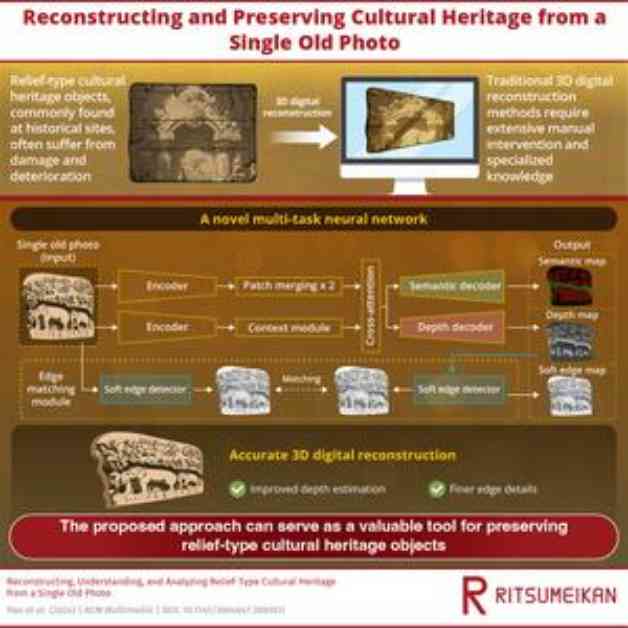Relief carvings are important cultural heritage objects found at historical sites worldwide. These sculptures often suffer from damage and deterioration over time, making preservation and restoration challenging. Traditional methods are laborious and require specialized knowledge. However, a multinational research team led by Professor Satoshi Tanaka from Ritsumeikan University has developed an innovative multi-task neural network for 3D reconstruction and digital preservation of relief sculptures using old photos.
This new method enhances depth estimation, particularly along soft edges, using a novel edge-detection approach. The network performs multiple tasks such as semantic segmentation, depth estimation, and soft-edge detection to improve the accuracy of 3D reconstruction. The soft-edge detector in the network treats edge detection as a multi-classification task, considering changes in brightness and curvature. By focusing on soft-edge regions, the network produces clear and detailed 3D images of relief sculptures.
The team applied this model to reconstruct hidden reliefs at the Borobudur Temple in Indonesia, allowing virtual exploration of unseen treasures through computer visualization and virtual reality. Professor Tanaka emphasizes the potential impact of this work on preserving cultural heritage and enabling immersive virtual experiences for future generations.
This technology not only benefits archaeologists but also opens new opportunities for preserving global heritage through VR and metaverse technologies. With the ability to reconstruct and digitally preserve relief sculptures from old photos, this innovative approach holds vast potential for cultural heritage preservation and sharing.
Ritsumeikan University, where Professor Tanaka is based, is known for its commitment to generating social symbiotic values and nurturing emergent talents. The university aims to become a next-generation research institution by supporting researchers at all career stages and building a global research network. Professor Tanaka’s extensive research background in computer graphics, scientific visualization, digital humanities, and medical visualization has contributed to the development of this groundbreaking technology.
Dr. Jiao Pan from the University of Science and Technology Beijing, a collaborator on the project, played a significant role in the research on 3D reconstruction of buried Borobudur Temple reliefs during her Ph.D. studies under Professor Tanaka. The study, presented at ACM Multimedia 2024, showcases the potential of innovative technologies in preserving and understanding relief-type cultural heritage from old photos, paving the way for future advancements in heritage conservation.
